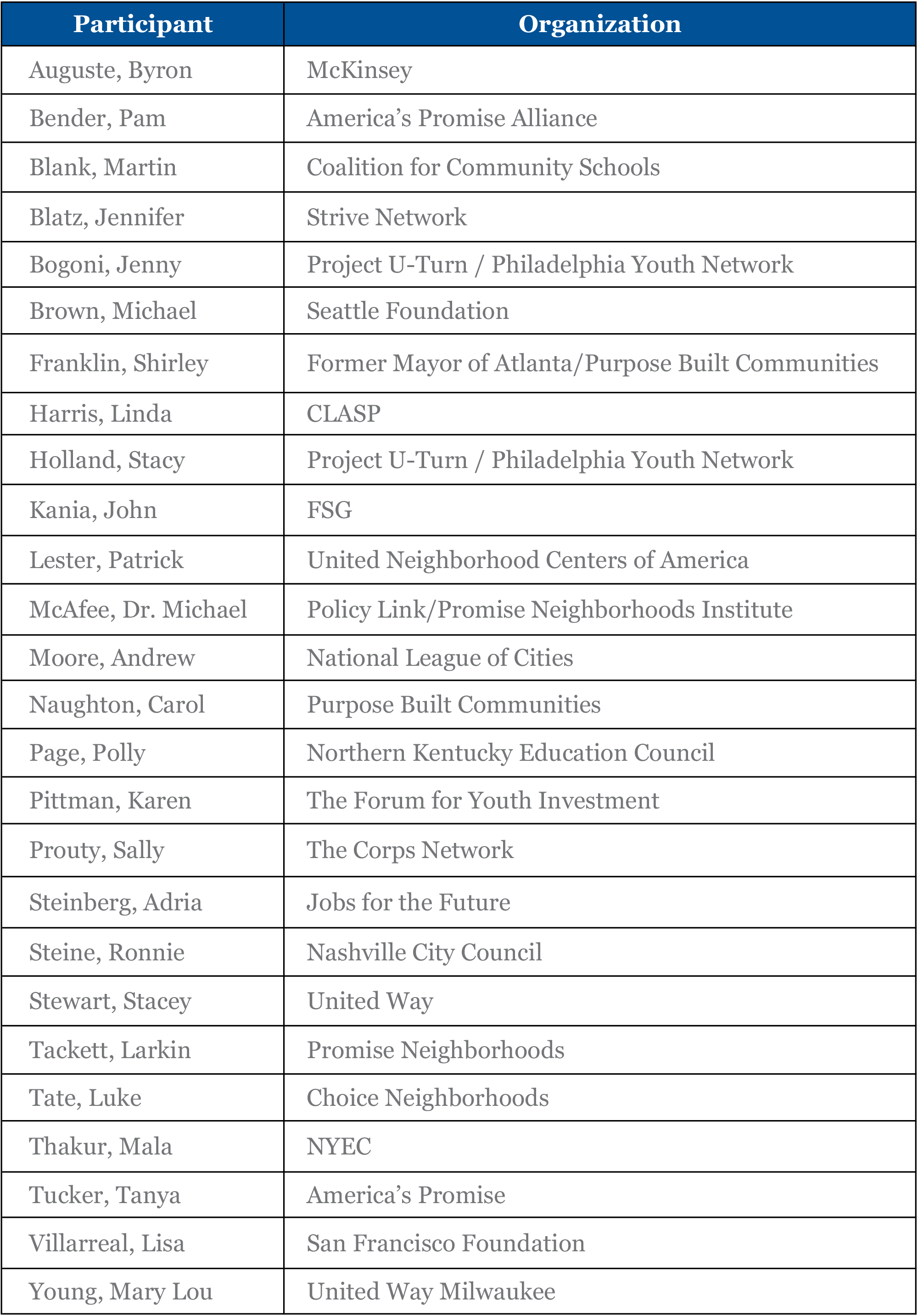By enlisting all sectors to work together, a new kind of community collaborative is making strides toward tackling powerful social issues in communities. In the report, “Needle-Moving Community Collaboratives: A Promising Approach to Addressing America’s Biggest Challenges,” members of the White House Council for Community Solutions and Bridgespan took a look at how exemplary collaboratives made needle-moving progress (10-percent progress in a community-wide metric) on key challenges facing their communities. (See 12 case studies of needle-moving collaboratives.) The report explores the keys to success for community collaboratives—and uncovers challenges that stand as potential roadblocks.
This collection of guides—Community Collaborative Life Stages, Capacity and Structure, and The Next Generation of Community Participation—builds on this work and provides tactical pathways to help community collaboratives take actions that will increase their chances of success. Intended to highlight approaches that have worked, the guides contain insights from the experiences of collaboratives that have been successful at creating positive social impact in their communities.
Who should use these guides?
These guides will be most useful for community collaboratives that can say “yes” to the following questions:
- Do we aim to effect “needle-moving” change (i.e., 10 percent or more) on a community-wide metric?
- Do we believe that a long-term investment (i.e., three to five-plus years) by stakeholders is necessary to achieve success?
- Do we believe that cross-sector engagement is essential for community-wide change?
- Are we committed to using measurable data to set the agenda and improve over time?
- Are we committed to having community members as partners and producers of impact?
Explore the guides
Below are short summaries of each guide with links to their respective pages.
Community Collaborative Life Stages
The Collaborative Life Stages guide can help a community collaborative succeed at any stage in its life cycle – from planning and development, through roll-out and course-correcting, and on to deciding its next steps. We have organized it along a five-part timeline. The first two sections will help guide new collaboratives in selecting goals and starting out on the right foot. The last three sections will help existing collaboratives stay on track to create the kind of outcomes that are truly community changing.
The Next Generation of Community Participation
Community participation is critical to the success of collaboratives. Without community members actively sharing in the process, collaboratives lose opportunities for better results as well as opportunities to give their work real context. Even successful community collaboratives believe they have much to learn about ways to effectively engage their communities. This guide has been prepared to help collaboratives engage with individual community members. It highlights approaches to community participation, illustrated by examples of how a number of collaboratives have successfully encouraged collaboration within their communities.
Capacity and Structure
Staff that support the day-to-day work and how a collaborative is organized influence its ability to meet its goals. Having dedicated capacity and the appropriate structure for the collaborative as a whole is critical to keeping partners engaged and achieving results. This guide explores key organizational aspects (dedicated capacity, structure, and culture) as well as two related elements (data,continuous learning, and funding) and considers their importance to running a successful collaborative for the long term.
Acknowledgements
We want to express special appreciation to the people below who attended the convening on community collaboration, participated in regular discussions of the community collaborative toolbox, and/or acted as reviewers of the toolbox materials.



